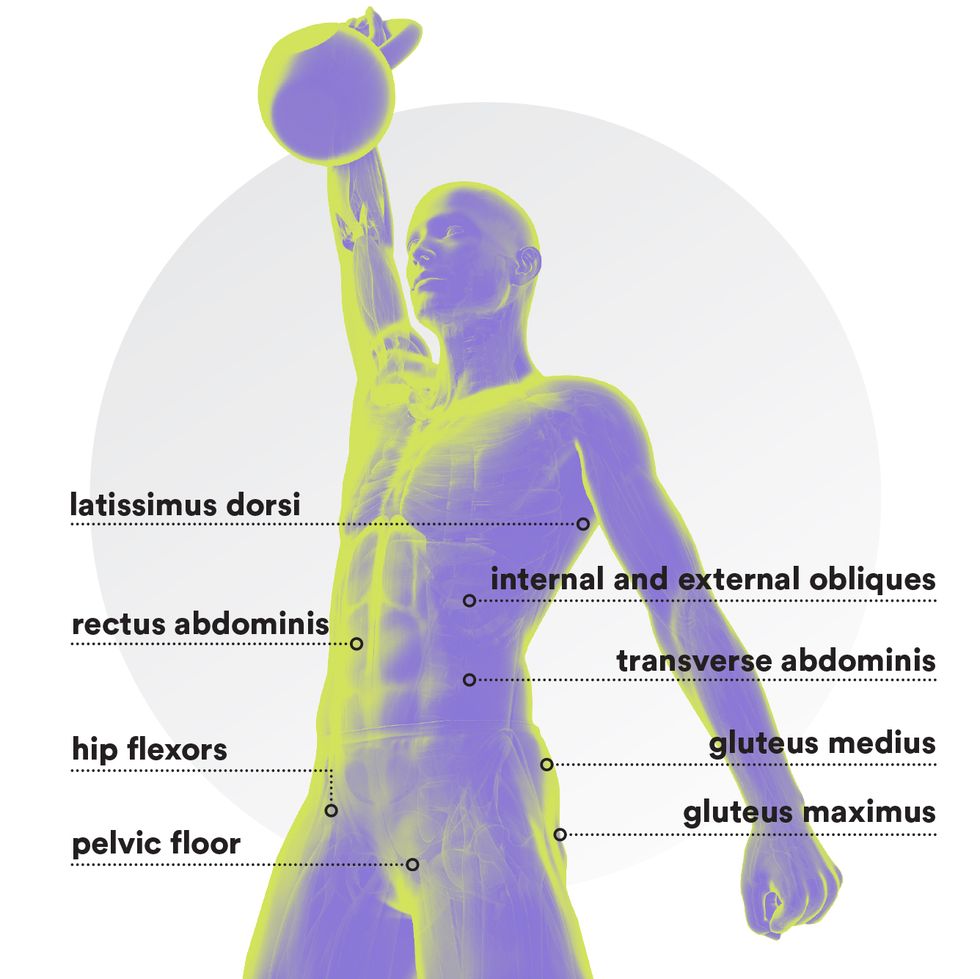Everything You Need to Build a Strong Core
Adopt this personal trainer–recommended core workout to run stronger and stay injury-free.
Runners spend a lot of time searching for the perfect training plan that combines easy runs, speed workouts, and rest days to keep building their fitness. Most plans also include a day or two listed as cross-training, which we use as an opportunity for additional cardio.
If we instead dedicated time to strength training, specifically in our core, we’d reduce the chance of injury, increase our speed, and run more efficiently. In the last decade as a running coach, I’ve helped runners through hip pain, runner’s knee, lower back pain, and IT Band Syndrome, which nearly every physical therapist I consult with has correlated with a weak core.
A weak core doesn’t just mean a weak six-pack (a.k.a. the rectus abdominis). Your core encompasses the trunk of your body, which is 29 pairs of muscles including those that lie deeper in your centre, like the transverse abdominis, internal obliques, pelvic floor, and the muscles along the spine, like the erector spinae. Your glutes, hip flexors, lats, and traps are part of the core, too. Anatomy aside, this is a reminder that our core requires more than a few crunches.
The Expert: Amanda Brooks has logged 41,000-plus km’s in her 20 years of running. She is a United Endurance Sports Coaching Academy–certified running coach and an ACE-certified personal trainer. Since 2012, Amanda has worked with over 200 runners individually and thousands more through online group programs on her website, RunToTheFinish.
CORE MUSCLES
A strong core means that your glutes can help keep your knees in proper alignment when you run, preventing knee and ankle pain. It means your back has the endurance to maintain good posture even as you fatigue on longer runs so you can sustain pace and form. A strong core also allows your hips to remain level with each footfall, reducing force down the leg and, therefore, helping to decrease the risk of overuse injuries.
Ideally, your training plan should include at least two full-body strength sessions per week—every exercise will engage the core somewhat—and up to two additional core-focused sessions. But schedules are rarely ideal, so even 10 minutes of core work done consistently will have benefits.
Knowing my athletes are busy people, I created a daily 10-minute programme called the 30-Day Core Challenge. My goal is to provide runners with a specific set of moves so they’re not overwhelmed by where to start and can simply dedicate time before every single run to work the abs, hips, and glutes.
Adding moves to your existing warm-up stimulates your muscles so they work more efficiently throughout your run. It also means you’re less likely to skip the core work when your to-do list is already overloaded.
When first adding core workouts to your schedule, you might struggle to hold a plank for 30 seconds or complete 10 reps of a movement. That’s normal and simply a reminder to stay consistent. Focus on mastering the basic movements, and you’ll build more power than if you progress without making the connection between the exercise and the muscles you should feel firing during that move.
After just a couple of weeks of core workouts, most runners notice increased stability in their stride and less deterioration of their running form as they fatigue. And those changes make it easier to stay as committed to your core as you are to your daily runs.
READ MORE ON: core training strength-training


